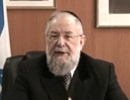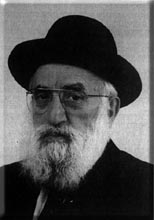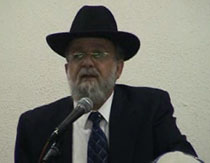Beit Midrash
- Sections
- Chemdat Yamim
- Parashat Hashavua
- Torah Portion and Tanach
- Bamidbar
- Naso
David was also the first to decide the question of where the spiritual center of the Jewish people would be – where was the "place that G-d shall choose"? Yerushalayim became and has been the capital city since the days of King David. Yerushalayim brings together both the national side, the political freedom from foreign powers that we saw was highlighted in Brit Bein Hab’tarim and the seventh day of Pesach, as well as the spiritual epicenter of the nation, connecting the law and the Mikdash that were intertwined on Har Habayit.
In light of this, let us focus on the following phenomenon. The Sefer Yehoshua focuses mainly on the fulfillment of the mitzva "You shall conquer the Land" (Bamidbar 33:53-54)
Yehoshua Bin Nun, it seems, did not focus on building governmental structures for coming generations. He drew his strength from his teacher, Moshe Rabbeinu. As a leader, he also dealt with strengthening the bond between the nation and Hashem as well as with the king. This is proven from the common version of the brit in those times: "Yehoyada made a covenant between Hashem and the king and the nation to be a nation for G-d, and between the king and the nation" (Melachim II, 11:17)
Yehoshua did not deal with the location of "the place that G-d shall choose" or the building of the Mikdash. Sefer Shoftim mainly deals with strengthening localized leadership. The Judges for the entire part of that era, according to the simple understanding of the p’sukim, were not judges but leaders. Only in the time of Shaul, the question arose of a unified state under one king who would pass the kingship onto his children. Even Shaul did not deal with the question of the Mikdash (other than on one night). In the days of David, the royal family was chosen for generations, an independent Jewish state was established, and a legal system was introduced to deal with criminal punishments. Only after this did the question of the Mikdash arise, and it was ultimately built after King David’s death by his son Shlomo.
The order is clear. First we need to clarify the national and royal side, and only afterward can we deal with the building of the Mikdash, with a Torah-based legal system at its side, in the most ideal fashion.
Let us pray that just as we merited to see the beginning of the redemption on a national level with a state, and with a high Torah level (never before has there been so much Torah learning), so too should we merit to see progress in establishing a Torah-based legal system. This will sanctify Hashem’s Name and ultimately bring the Shechina to dwell among us again.

Giving More Than You Have?
Rabbi Yossef Carmel | 20 Cheshvan 5767

Do Not Desecrate the Land
Rabbi Yossef Carmel | Tammuz 5767

Parashat Hashavua: Nitzavim in the Parasha and by Yam Suf
Rabbi Yossef Carmel | Elul 5785

























